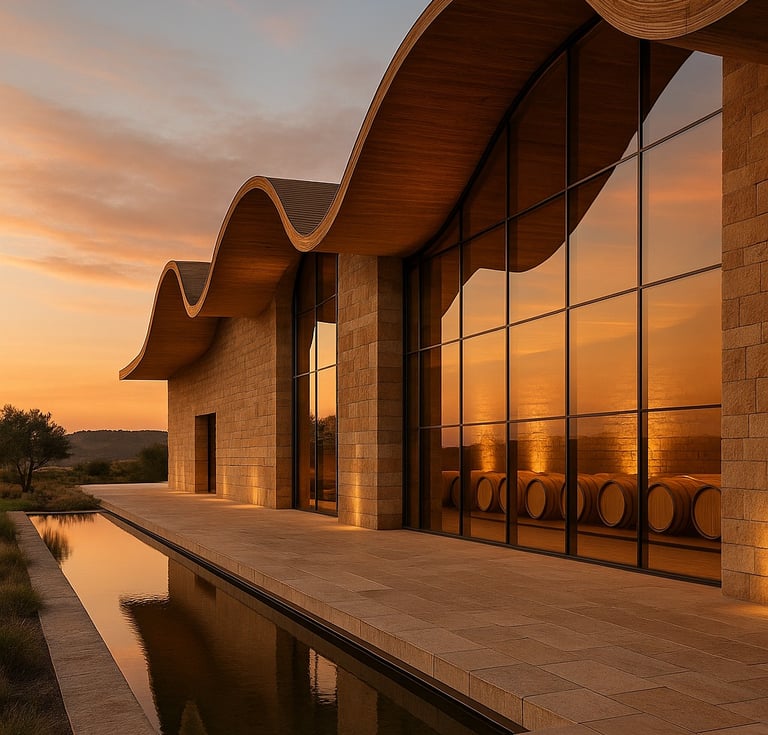
Wine and Architecture
When Space Tells the Brand’s Story
7/3/2025


Introduction: Space Speaks Too
In the world of luxury, the environment is not decoration — it is a message. And in the universe of wine, a winery’s architecture is — in many cases — the first way a brand presents itself to the world. Before tasting a wine, the visitor has already perceived its essence through the materials, the light, the layout, the sounds, and the silence of the place. Architecture builds perception. And in the realm of fine wine, perception is value.
From Building to Symbol: Architecture as Identity
A winery should not resemble any other. The space where wine is made and visitors are received must be a physical extension of the wine’s character and the brand’s positioning.
When architecture is designed with intention, it succeeds in:
Communicating the house’s style without words.
Creating a coherent sensory experience.
Elevating perceived value from the very first impression.
In luxury, coherence between product, narrative, and space is non-negotiable.
Aesthetics, Function and Emotion: The Strategic Triangle
The most influential wineries in the world have understood that design is not only beauty — it is strategy. The choice of materials, the orientation of the building, how it is toured, the views, the scents, the scale… Everything speaks.
Function: Technical and operational efficiency without sacrificing experience.
Aesthetics: A visual language aligned with the brand’s universe.
Emotion: An atmosphere that connects and leaves a mark.
Examples such as Zuccardi Valle de Uco (Argentina), L’And Vineyards (Portugal), Château Lafite Rothschild (France), Antinori nel Chianti Classico (Italy), or Marqués de Riscal (Spain) show how architecture can be — quite literally — a manifesto.
The Most Common Mistake: Architecture Without Soul
Many wineries invest large sums in impressive buildings… yet disconnected from their DNA. The result: cold, incoherent spaces that are impossible to inhabit emotionally. Building luxury is not about raising a striking structure. It is about designing an immersive, coherent experience where visitors feel that every corner is part of the same story. Simply put: architecture must also have terroir.
Conclusion: Space as the Silent Language of Luxury
Luxury is expressed in the details, in coherence, in the ability to evoke emotion without needing explanation. A winery aiming for the high-end segment cannot underestimate its architecture. It must be conceived just like its wine: with sensitivity, with intention, and with strategic vision.
🍷 Because in contemporary luxury, space is not just toured — it is felt.

